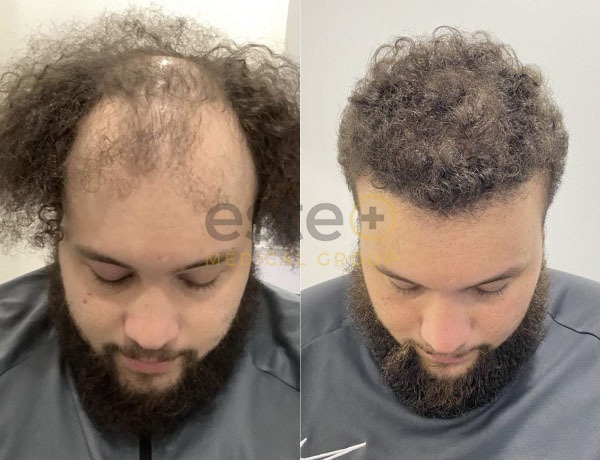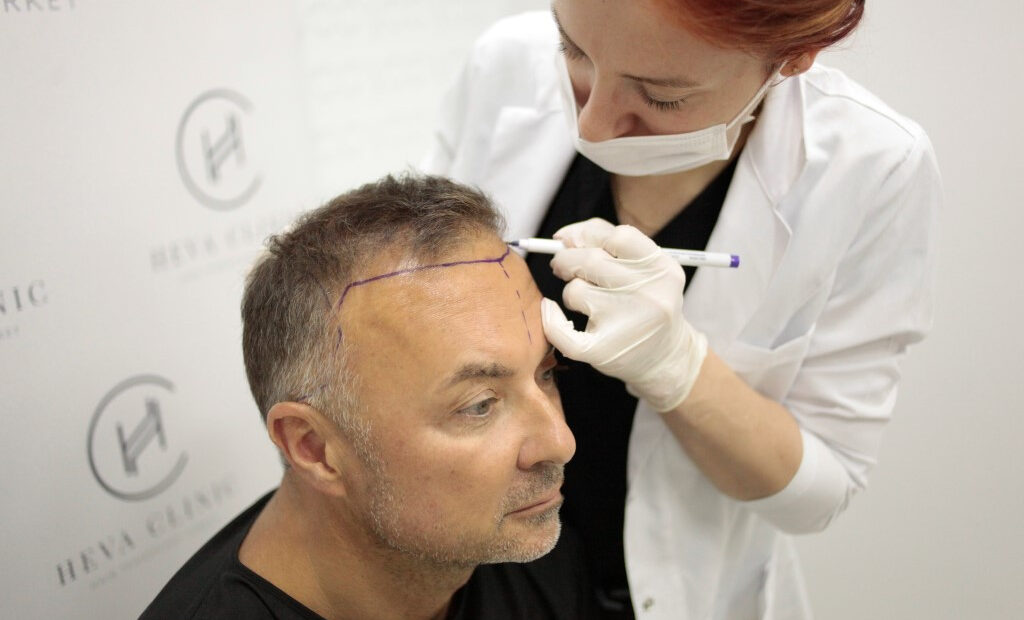"Hair Transplant vs Hair System: Permanent solution or temporary fix?"
What Is a Hair Transplant?
A hair transplant is a surgical procedure where healthy hair from one part of your scalp is moved to the areas where hair is thinning or missing. It’s done by a specialist called a dermatologist or a hair restoration surgeon. The procedure is simple, but it requires a lot of care and attention.

How Does a Hair Transplant Work?
During the transplant, the doctor removes small patches of healthy hair from the back or sides of your scalp. These patches are then carefully placed into the thinning areas. Over time, the transplanted hair will grow just like your natural hair.
There are two main types of hair transplant methods:
- FUE (Follicular Unit Extraction): In FUE, individual hair follicles are removed and transplanted. It’s a more modern and less invasive method.
- FUT (Follicular Unit Transplantation): FUT involves removing a strip of scalp and then dividing it into smaller sections for transplanting.
Benefits of a Hair Transplant
A hair transplant offers several significant benefits, primarily restoring natural-looking hair to areas affected by thinning or baldness. It provides a permanent solution by relocating healthy hair follicles from dense areas to thinning regions, leading to fuller and more youthful-looking hair. The procedure boosts self-confidence and enhances one’s appearance, offering a long-lasting effect compared to temporary solutions like wigs or hairpieces. Additionally, hair transplants require minimal maintenance after recovery, and the transplanted hair continues to grow naturally, making it an ideal choice for individuals seeking a reliable and effective treatment for hair loss. Results can be life-changing for many.
- Permanent Results: Once the hair grows back, it’s there to stay.
- Natural Look: The transplanted hair looks and feels like your natural hair.
- Little Maintenance: After recovery, your hair doesn’t need a lot of extra care.
Downsides of a Hair Transplant
- Expensive: Hair transplants can be costly. The price depends on the number of grafts needed.
- Recovery Time: After the surgery, you’ll need to rest for a while as your scalp heals.
- Not for Everyone: If you don’t have enough healthy hair for a transplant, this might not be the best option.
What Is a Hair System?
A hair system is a non-surgical solution to hair loss. It’s like a wig or a hairpiece that’s designed to look like natural hair. Hair systems are made of synthetic or real human hair and are attached to your scalp using clips, tape, or other adhesives.
Benefits of a Hair System
A hair system offers several key benefits, especially for individuals looking for an immediate, non-surgical solution to hair loss. It provides a natural, fuller appearance by covering thinning or bald spots with high-quality, customizable hairpieces. Unlike a hair transplant, a hair system requires no surgery and offers instant results, making it a great option for people seeking a quick transformation. It’s also versatile, allowing for different styles and colors. Additionally, modern hair systems are lightweight, breathable, and comfortable, providing confidence without the need for long recovery times. With proper care, a hair system can last for months, providing an effective solution.
- Temporary: Hair systems need to be replaced over time, and you may need to adjust or replace them as your hair grows.
- Maintenance: They require regular cleaning and care to keep them looking good.
- Can Feel Uncomfortable: Some people find wearing a hair system uncomfortable, especially when it’s hot or when they sweat.
- Instant Results: You get full hair immediately after the system is attached.
- Customizable: Hair systems come in different styles, colors, and lengths, so you can get exactly what you want.
- Non-invasive: There’s no surgery, so you don’t need to worry about any recovery time.

Downsides of a Hair System
While hair systems offer an immediate solution to hair loss, there are some downsides to consider. One of the main drawbacks is the ongoing maintenance required to keep the system looking natural. Regular cleaning, reattachment, and adjustments are necessary, which can be time-consuming and costly. Additionally, hair systems may cause scalp irritation or discomfort if not fitted properly or if worn for extended periods. They also don’t allow the scalp to breathe as naturally as real hair, potentially leading to issues like sweating or itching. Lastly, they are not permanent and need to be replaced periodically, adding to the long-term costs.
Key Differences Between Hair Transplants and Hair Systems
Now that you know a little about both, let’s compare the two more closely to see which one might be right for you.
1. Cost
A hair transplant is typically much more expensive than a hair system. While a hair transplant is a one-time cost, the price can still be very high. On the other hand, a hair system is usually cheaper upfront, but you’ll need to replace it regularly, which can add up over time.
2. Longevity
A hair transplant provides a permanent solution to hair loss, as the transplanted hair will continue to grow naturally. In contrast, a hair system is temporary and needs to be replaced after a certain period, depending on how well you take care of it.
3. Appearance
Both options can look natural if done right. A hair transplant usually results in hair that grows and looks just like your natural hair. A hair system can also look very real, especially if it’s custom-made to match your natural hair, but it may not blend as seamlessly if not done properly.
4. Maintenance
After the initial recovery period, a hair transplant requires very little maintenance. You’ll treat the transplanted hair the same way as your natural hair. On the other hand, a hair system requires ongoing care. You’ll need to clean it, adjust it, and sometimes replace it.
5. Suitability
A hair transplant is ideal for people who have enough healthy hair on their scalp for the procedure. If your hair loss is too severe, this might not be an option. A hair system, however, can be a great choice for anyone, regardless of the stage of hair loss.
Which Option Is Right for You?
Go for a Hair Transplant If:
- You want a permanent solution.
- You have enough healthy hair to donate for the transplant.
- You’re willing to invest in a one-time, higher cost.
- You’re ready to go through the recovery process.
Go for a Hair System If:
- You need a quick, non-surgical solution.
- You’re not ready for surgery or recovery time.
- You prefer a more temporary option that you can change.
- You want a lower initial cost.

Conclusion
Both hair transplants and hair systems are popular options for people dealing with hair loss. While a hair transplant offers a permanent and natural-looking solution, it requires surgery, recovery, and a higher cost. On the other hand, a hair system is a quick, non-invasive fix that’s more affordable in the short term but requires regular maintenance and replacement.
Ultimately, the best choice for you depends on your budget, how much maintenance you’re willing to do, and how permanent you want your solution to be. Take the time to think about your needs, and consult with a hair restoration specialist to help you decide which option is right for you.

